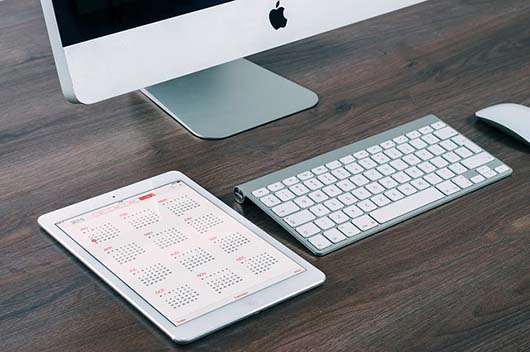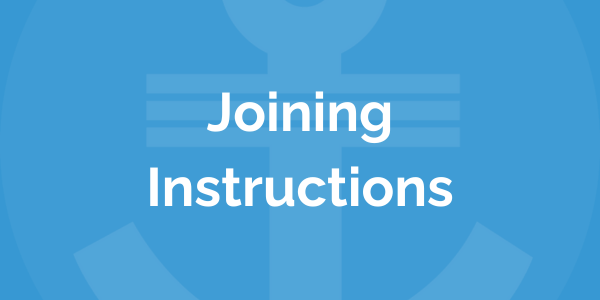5 Practical Tips for New Auditors
 Kenny Hannah
·
4 minute read
Kenny Hannah
·
4 minute read
In my day-to-day role behind the scenes here at SQMC HQ, I’ve lost count of the noteworthy tips I hear in casual conversations with our auditors, trainers, and consultants. So I decided to start scribbling them down and sharing them through the Insight Column. Here are the first 5 that spring to mind:
1. Keep a paper diary
It was our nuclear specialist, Bob Bell, who gave me this particular nugget.
As a bloke who embraces the practicality and convenience of advanced information technology such as smartphones and cloud-synching calendars, I’m a big fan of electronic diary apps. They’re especially handy for me, as I have a memory like a sieve; so the automated reminders have saved my bacon on a number of occasions!
However, as Bob pointed out to me last week, it’s not uncommon for auditors to be told to leave their electronic gadgets at the threshold before going on-site to audit certain organisations. One reason for this is confidentiality and the protection of trade secrets, so mobile phones (which more often than not feature a camera as well as your calendar app) are a strict no-no.

But referencing your personal and professional schedules is a big part of an auditor’s daily routine – especially freelancers like Bob. So... (you can see where this is going...) a paper diary will allow you to schedule follow-up meetings, desktop reviews, or future audits right there and then, without the need to check later and come back to the client. This benefits the client as they immediately know where they stand, and it benefits you because you’ve cut down on an extra administrative chore when you get home.
Another electrical device the 21st Century auditor tends to rely on is a tablet (or e-book reader) to access their copy of the Standard they’re auditing against. For similar reasons, therefore, a paper print-out of the Standard is essential. Or better still...
2. Memorise the Standard
Although I berated myself for my poor memory, I’m well aware that I’m in good company! For instance, I bet you struggled to remember everyone’s names the last time you were introduced to a group of 4 or more strangers. Right?
In fact, our brains are so incredibly designed that it's actually unfair to criticise our memory banks. The reason why you didn’t immediately store those 4 strangers' names is because you received too much information in too short a burst for your mind to process. Your brain didn’t have the chance to do what neuroscientists call "encode" the information. And – unless you have a particular gift – that’s just the same awkward social problem we all face.
Memorising a succinct international Standard like ISO 9001 or ISO 14001 is actually a more plausible task to give your brain, and you may even find that it happens automatically, simply through regular reference to it.
"Make an association between a clause with a real experience or company you worked for..."
As you read a document, you unconsciously trigger your brain’s ‘memory-making process’, and if you try to attach the new information to scenarios you are already familiar with, these reference points become footholds in the retrieval process later on. Make an association between a clause with a real experience or company you worked for (i.e. “Clause 9.1.2 Monitoring, measurement, analysis and evaluation of customer satisfaction”… that left a lot to be desired at ParcelFarce Inc when they sent our last shipment up the road to Lochore instead of overseas to Lahore!).

What's happening is your brain is rapidly mapping out patterns, and applying new ideas to previously stored ones, to create a structure through which it can retrace its steps when called to do so. It’s like navigating with a complete road map, rather than blundering along your journey using a list of unconnected, random place names. Plus, the more you travel these roads in your mind (i.e. the more often you’re working with the Standard), the stronger the associating neural pathway becomes, and the easier it gets to remember the clause number during the audit situation.
This is one reason why SQMC trainers contextualise the clauses of the Standard during the initial read-through on our ISO 9001:2015 Foundation courses – we’re literally creating memory patterns within our student’s brains.
For the auditor, the ability to instantly pin clause references to the auditee’s procedures is a real boon: a fantastic tool that will make your auditing more time-efficient, and maximise your capability to actually help the auditee, adding value to the overall audit event.

3. Build a relationship with the auditee in advance
While you will often be auditing a process or a department, it’s important to remember that you will be interviewing a person, or people. The quality of the information you can glean from them through your questioning will determine to a certain extent the quality and outcome of the audit for everyone concerned.
"Try not to reinforce any negative stereotypes that (some) auditors of a bygone era once epitomised; of being robotic or a member of ‘the Gestapo’!"
Therefore, it will behoove you to get in touch with your auditee by telephone (more personable than email) well in advance of the audit – maybe a month or so. Make friendly contact, and try to put them at ease. Show your humanity, and be careful not to reinforce any negative stereotypes that (some) auditors of a bygone era once epitomised; of being robotic or a member of ‘the Gestapo’!
In making contact with them, you can help them to prepare by furnishing them with a detailed Audit Plan. A progressive auditor will take every step possible to minimise the stress for his or her auditee.
4. Turn up on time
It sounds like a no-brainer, but the last thing you want to do is compromise your professionalism by keeping your auditee waiting. The embarrassment caused by unpunctuality may result in a certain amount of leverage granted during the interview – an advantage that would not normally be granted by an unflustered auditor. At best this creates a more stressful day for you, while at worst you might even breach a code of conduct.
5. A pack of highlighters is an auditor’s best pal
Thanks to Karen MacKenzie for this titbit, which is all about colour-coding.
Documents that utilise colour-coding make data far quicker to locate with your eyes. Consider the London Underground map, and imagine how difficult it would be to follow if all the routes were in grey scale!
Effective use of colour also improves the visual structure of technical reports or instructions.
Colours create associations in our brain, and can give us an immediate overview of a situation; for example, political constituencies across the map of a nation to highlight a party’s majority; or the use of green ‘hired’ or red ‘fired’ signs in The Apprentice – You’re Fired audience's final appraisal.
Likewise, as you carry out your audit you can colour-code key areas in your notes, to help you with gap analysis; identifying where you’ve collected evidence; and which collected evidences still require supporting evidence for verification.
Highlighting in different colours enables you to see at an instant where you are, and where you need to focus. (You may even have quickly registered 4 references to velocity in this section of the article, thanks to my use of a dayglo blue highlighter!)
To learn more about 1st, 2nd and 3rd party auditing best practice, and gain a globally-renowned auditor's qualification, sign up for one of our ISO 9001:2015 Lead Auditor training courses, held publicly (bi-monthly on average) at venues across Scotland's central belt.

